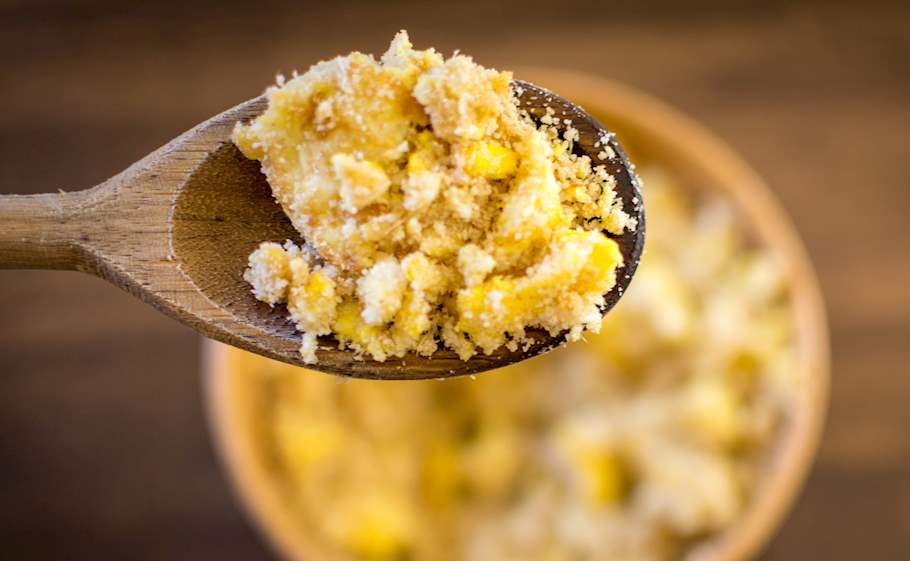Authentic Farofa Recipe Brazil, South America
JUMP TO RECIPEWe strongly advise you to read the cooking tips before jumping to the recipe though
Introduction & history
At its most basic, farofa is nothing more than manioc flour toasted in butter, and lots of it as the flour needs to be moistened but still have a crunch to it. However, some recipes will call for bacon fat and not butter, while in the Brazilian state Bahia, they use dendê oil, an orange palm fruit oil, instead. The list of additional ingredients that can be put in farofa is almost endless, from bacon, onion, and garlic, to plantains, raisins, olives, and eggs, either scrambled or hard-boiled ones. The seasoning is typically only salt, but pepper, parsley or coriander are also common. Farofa is served as a side dish, either to be sprinkled over a dish or to be eaten with a main dish like rice, and typically accompanies dishes like feijoada, barbecue, and hearty stews.
Serve With
Cooking tips
-
manioc flour
Manioc flour is coarse and comes in two varieties — white and toasted — which both can be used to make farofa, the main difference being that using the toasted one will give your farofa a more intense flavor. If you're living outside of Brazil or areas with large Brazilian communities, sourcing manioc flour may be difficult, so your best bet is to look for it online. -
method
It is easy to make dry farofa, as manioc flour soaks up the butter very quickly. So, if you’d like to make one that is buttery and has a melt-in-your-mouth feel, add so many additional ingredients that they make up the majority of the dish. -
serving
Farofa should be served still warm or at room temperature and should be eaten with the main dish, though some hardcore farofa fans will eat it on its own.
Recipe variations
Farofa with Eggs and Scallions
PREP 5min
COOK 15min
READY IN 20min
This recipe gives instructions on how to prepare a type of farofa with eggs and scallions. This variant is courtesy of Leticia Moreinos Schwartz, a chef, cookbook author, and a Brazilian native, and can be found in her The Brazilian Kitchen cookbook, which was awarded the Best Latin Cookbook at the 2010 Gourmand World Cookbook Awards.
Ingredients
Farofa with Eggs
2 tbsp unsalted butter
1 ½ cups (200g) manioc flour
2 tbsp extra virgin olive oil
4 scallions (white and green parts), thinly sliced on a bias
5 large eggs
kosher salt and freshly ground black pepper
Preparation
Farofa with Eggs
While constantly stirring, toast manioc flour in melted butter over low heat until golden, about 8-10 minutes.
Warm olive oil in a nonstick skillet, then sauté the scallions (but, remember to keep a few scallions aside for garnish).
Beat the eggs, then season them with salt and pepper and pour them into the scallions.
When done, season with salt and pepper, to taste.
Scramble the eggs lightly.
Add the manioc flour and stir.
Other Variations
Other authentic recipes












Rating And Comments
Rate It
Wanna try?
Add To List